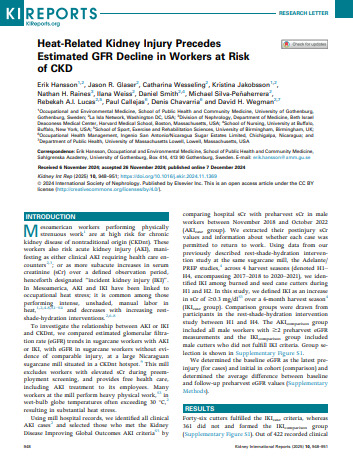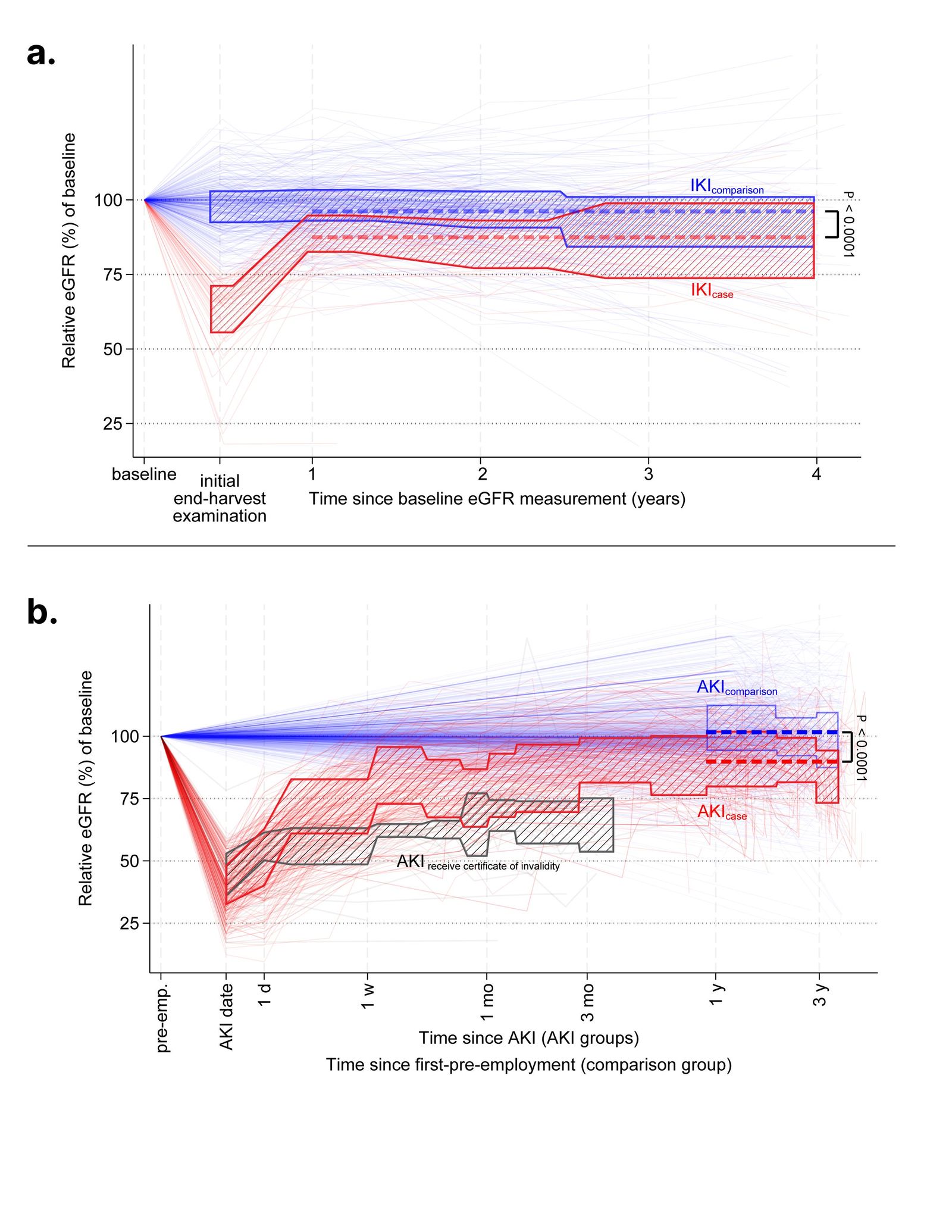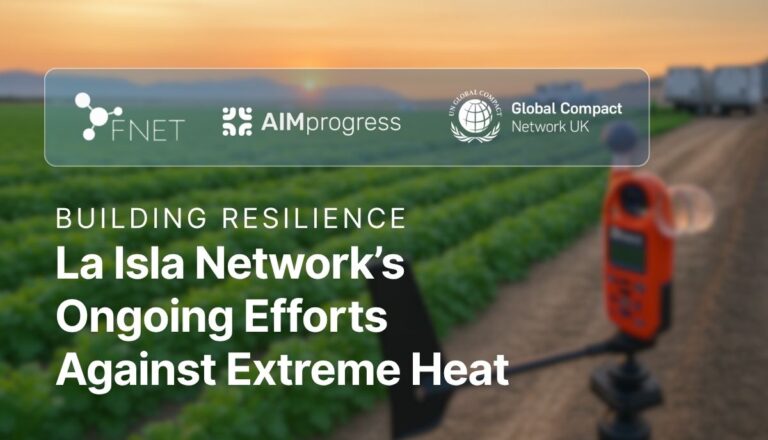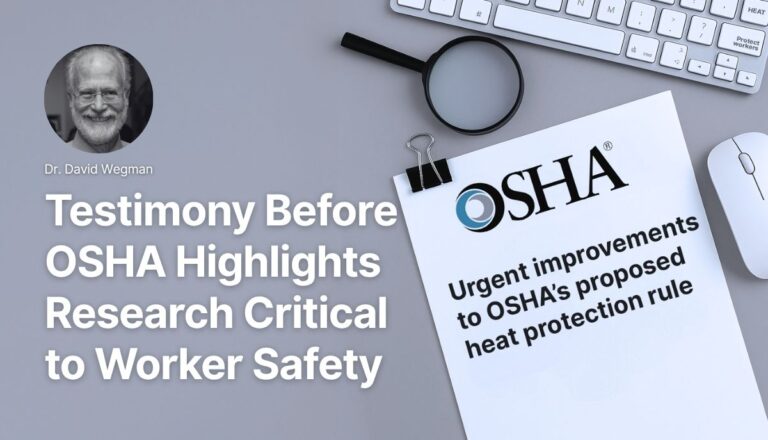
Sugarcane cutters at a large mill in Nicaragua exhibited kidney injury from working in high heat, which was a significant predictor of long-term decline in kidney function, a new study by La Isla Network (LIN) found.
Workers experiencing kidney injury lost on average 10% of kidney function. Roughly half of these workers never fully recovered during the next four years of the study period. Workers without kidney injury remained stable over the study period.
Long-term decline in kidney function can lead to chronic kidney disease (CKD), an irreversible disease requiring dialysis.
Kidney function loss among this group of workers is abnormal. The workers are young and do not present with diabetes or hypertension, meaning they lack the most common risk factors for kidney dysfunction. Yet, for decades sugarcane cutters in Central America have suffered from CKD.
The latest findings presented here further corroborate the hypothesis that working in high heat leads to kidney injury and long-term kidney function loss.
LIN has been at the forefront of the issue of heat-driven kidney injury for almost two decades, conducting research and implementing life-saving worker protections. Previous research conducted by LIN on this workforce in Nicaragua found that workplace heat exposure causes kidney injury, and that cooling measures like rest, shade and hydration reduce workers’ exposure to heat and prevent kidney injury.

However, research to date had left open questions about the direct progression from acute states of kidney injury to chronic disease states like CKD. Now, this study shows a direct connection, finding strong evidence that links acute injury events to long-term kidney function decline.
Lead author Erik Hansson, LIN Researcher at the University of Gothenburg, said the latest research presented here is in line with previous studies and adds to the understanding of how physically demanding work in hot environments leads to kidney injury and eventually CKD.
Hansson said, “Many workers who are exposed to severe heat stress develop acute kidney injury. These workers more often progress towards developing CKD, whether they notice it or not.”
Not least, the study’s authors determined the observed kidney function decline is likely an underestimate. Workers who experienced the most severe kidney injuries frequently did not return to work due to medical invalidity or job exclusion. These workers, then, were not represented in follow-up measurements and fell out of the study, despite potentially exhibiting the most significant declines in kidney function.
The findings also have global implications. The International Labour Organization determined last year that 2.41 billion workers are exposed to excessive heat worldwide, and as many as 26.2 million people globally are living with heat-driven CKD.
LIN CEO Jason Glaser said, “The data in this study is the clearest evidence collected by any research group to date showing how working in hot conditions leads to injury, illness and death. Employers and governments around the world need to pay attention and take action now — by funding and implementing preventive measures that reduce risk and drive efficiency. We are ready to assist employers and governments in protecting their workforces today.”
Moving forward, employers and governments should implement workplace interventions that are proven to reduce risk. LIN has already done this with success among the workforce represented in this study. Working with the sugar mill, LIN has created a Center of Excellence for worker protection, reducing hospitalizations by 80%, increasing productivity by 10–20% and generating a return on investment of 60%.
Furthermore, continued advocacy at global and national policy levels is critical to ensuring worker protections become standard practice worldwide. Government health agencies and multilateral institutions need enhanced policies, prioritizing regular health surveillance and data-driven frameworks that protect workers from extreme heat exposure.
La Isla Network is a health research and advisory organization dedicated to ending heat-related injury, illness and death among workers worldwide. We develop data-driven worker protection interventions and conduct management of change, improving the resiliency of workforces and businesses to heat exposure. LIN drives lasting change by working with governments and multilateral institutions to inform and create policy. For more information please use our contact form.








